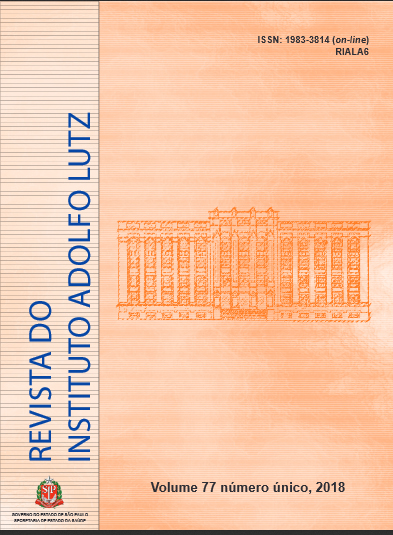Abstract
Regional characteristics influence the patterns of transmission of visceral leishmaniasis revealing over time different scenarios for the control of the disease in the state of São Paulo. Between 1999 and 2016, Lutzomyia longipalpis was detected in 95.8% (137/143) of the municipalities with human, canine or both transmissions. However, the occurrence of human cases in a new municipality and an increase in canine cases in the metropolitan region of São Paulo without detection of the vector suggest new challenges to surveillance and control of the disease. In the western part of the state, the classic form of transmission prevails with 19.70% (13/66) of the priority municipalities, accumulating 63.8% (245/384) of cases in the triennium 2015-2016-2017. This epidemiological pattern is compatible with the 80/20 empirical rule. Some of these municipalities had remission of the transmission with a subsequent increase in the number of cases over the years. Thus, it is concluded that the surveillance and control system of visceral leishmaniasis should seek new tools for coping with transmission in the various scenarios and for effective control of the disease.
References
1. Control of the leishmaniasis: report of a meeting of the WHO Expert Committee on the Control of Leishmaniasis. Technical Report Series. Geneva: WHO; 2010. [acesso 2018 Mai 18]. Disponível em: http://apps.who.int/iris/handle/10665/44412
2. Salomón OD, Feliciangeli MD, Quintana MG, Afonso MMS, Rangel EF. Lutzomyia longipalpis urbanisation and control. Mem Inst Oswaldo Cruz. 2015;110(7): 831-46. http://dx.doi.org/ 10.1590/0074-02760150207
3. Brasil. Ministério da Saúde. Secretaria de Vigilância em Saúde. Casos confirmados de Leishmaniose Visceral, Brasil, Grandes Regiões e Unidades Federativas, 1990 a 2016. [acesso 2018 Mai 18]. Disponível em: http://portalarquivos.saude.gov.br/images/pdf/2017/setembro/14/LV-Casos.pdf
4. Ciaravolo RMC, Henriques LF, Rangel O, Sampaio SMP. Vigilância entomológica e controle vetorial no Programa de Vigilância e Controle da Leishmaniose Visceral no estado de São Paulo. Bol Epidemiol Paulista. 2015; 12(135-136):24-34. [acesso 2018 Mai 18]. Disponível em: http://www.saude.sp.gov.br/resources/ccd/homepage/bepa/edicao-2015/135-136_site_2.pdf
5. São Paulo. Secretaria de Estado da Saúde. Superintendência de controle de Endemias. Relatórios de Resumos de Inquéritos caninos. [acesso 2018 Mai 18]. Disponível em: http://200.144.1.21/flebweblv/

This work is licensed under a Creative Commons Attribution 4.0 International License.
Copyright (c) 2018 Osias Rangel
